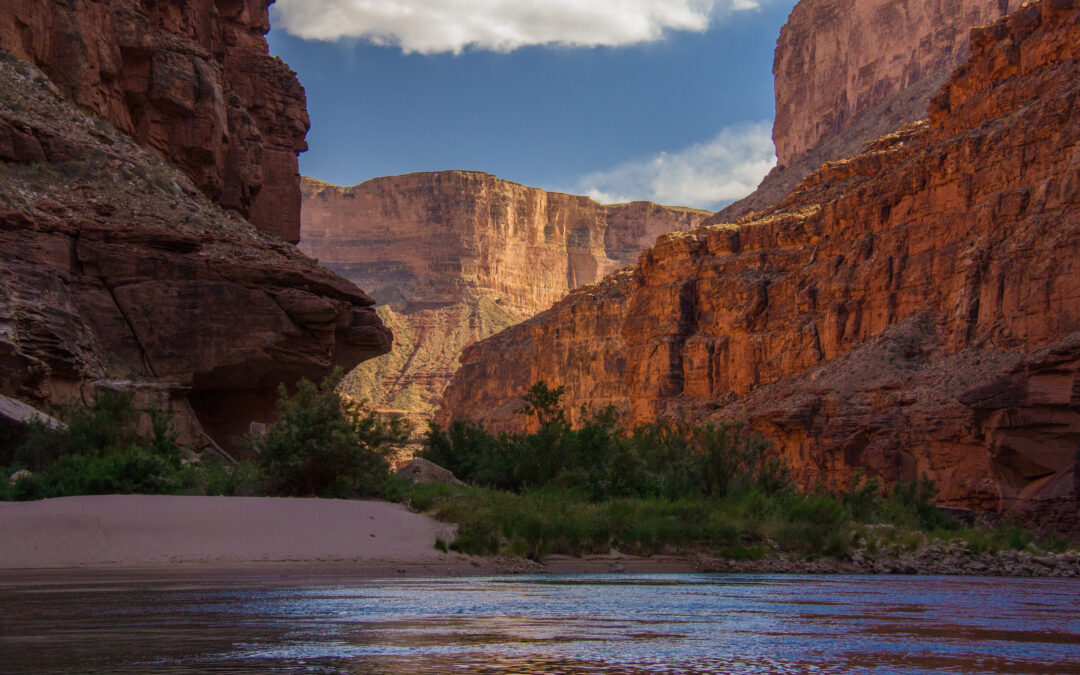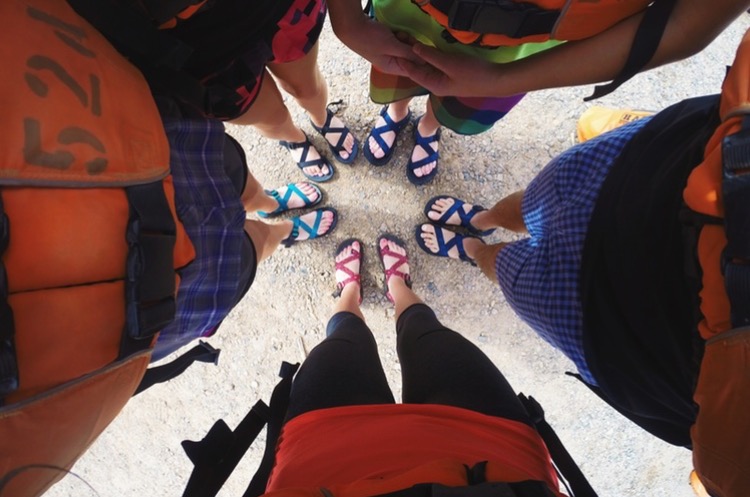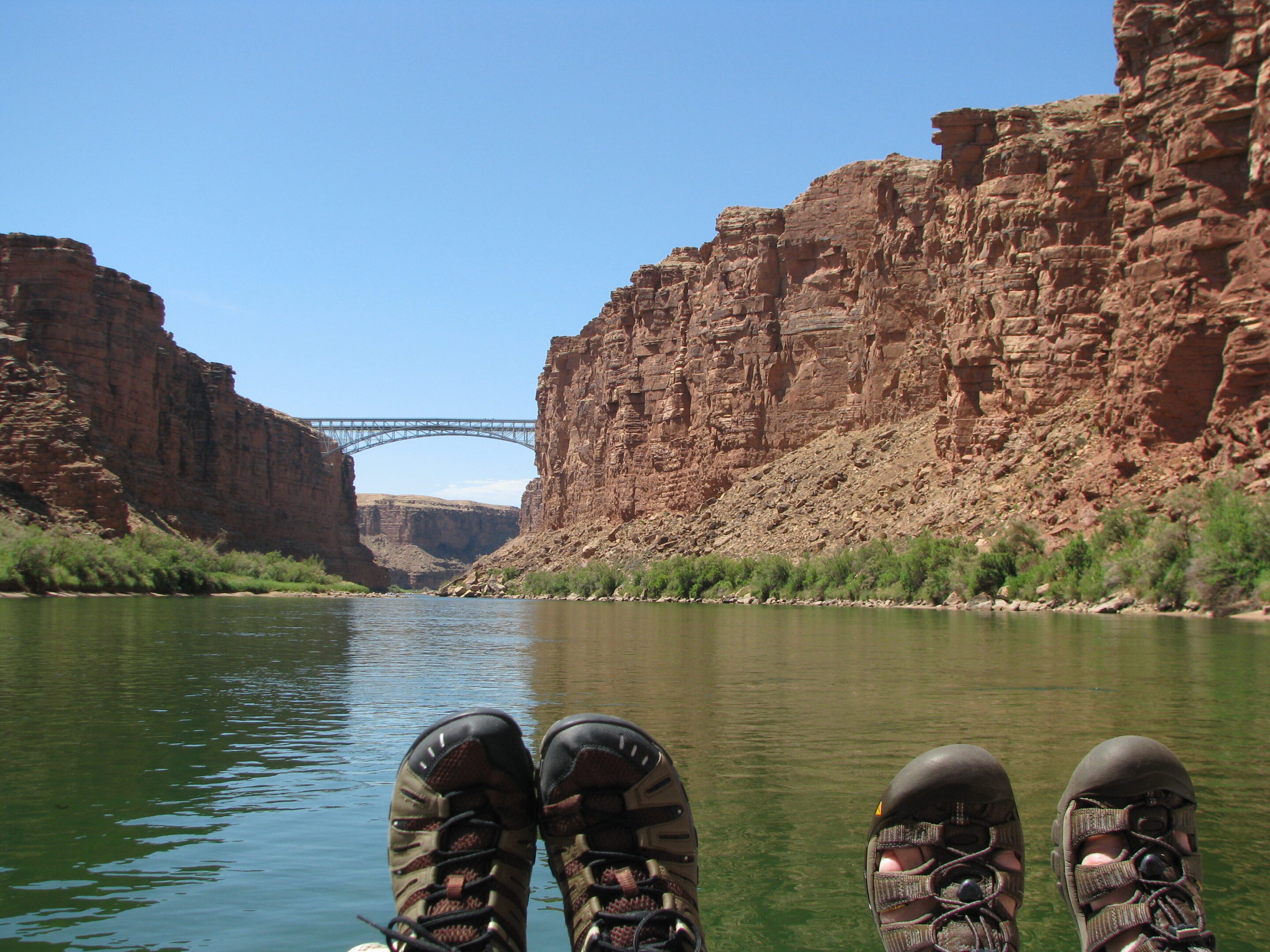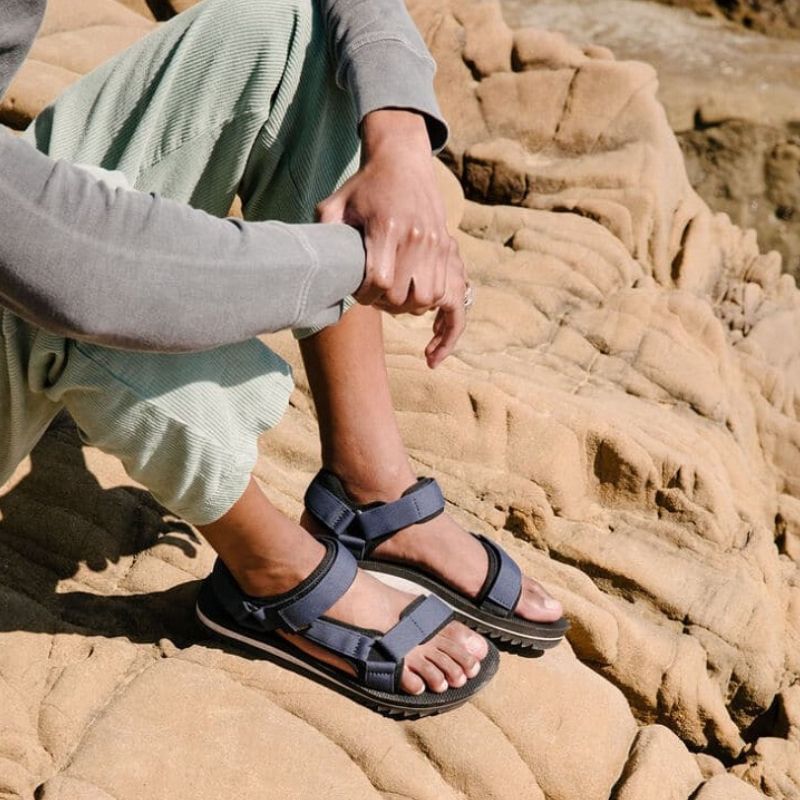It’s National Parks Week, and this year’s theme is “National Parks Playlist.” Just like music, the Grand Canyon means...


By: Mykaela Shoaf
Mykaela has been a river guide with Hatch River Expeditions since June 2020, so she’s seen a lot of shoes!
__________________________________________________________________________
One of the most essential items on your river rafting checklist is footwear. Choosing the right footwear means you’ll be comfortable in your shoes. And being comfortable in your shoes means your trip will be A LOT more enjoyable. On a Grand Canyon river trip, most people spend the majority of their days in their sandals, so these are the most popular river sandals reviewed by a river guide for hiking and rafting.
The most-worn brands of recreational sandals on the market today are Keens, Chacos, and Tevas. These sport sandals stand out for their durability, comfort, and performance. Here, we’ll talk about the strengths and weaknesses of each to help you decide which sandal is best for your preferences and needs.

Pros:
Cons:
Chacos are highly regarded for their adjustable strap system that allows users to achieve a precise and secure fit. This feature ensures that the sandals stay in place, even during rigorous activities like rafting or hiking. The straps are also designed to prevent chafing, making Chacos a comfortable option for extended wear. The straps system can be tricky to adjust initially, and it may take some time to find the perfect fit. If possible, we suggest having the attendant at the store help you adjust them until you are satisfied with the fit.
The LUVSEAT™ footbed provides excellent arch support and promotes proper alignment, making Chacos a great, ergonomic choice for those who have foot issues or need extra support during their activities. Meanwhile, the Vibram® outsole gives you great traction—meaning better stability and safety—on wet and dry surfaces, such as the boats, rocky trails, creek beds, and beaches.
Chaco’s open-toe design does leave toes exposed to potential hazards like rocks and branches, but we rarely hear complaints about this on the river. Just make sure to watch where you are walking!

Pros:
Cons:
Keens are popular for their durable, closed-toe design, which provides extra protection against rocks and debris for those concerned about stubbing their toes. However, the closed-toe design can be a drawback, as it traps sand and small pebbles inside the shoe. This can cause discomfort or even make you take off your shoes to get them out. The bungee lacing system ensures a secure fit, but the shoe’s top and sides are not adjustable and their numerous small holes can create multiple potential sites for blisters.
Keens’ arch support and cushioned insoles provide comfort during long hours of wear. The multi-directional lug pattern on the outsole offers good traction for navigating wet and uneven terrains.
However, in our experience as guides on the river, Keens are more likely than other brands to lose their soles or for the stitching on side straps to bust due to age and repeated exposure to the hot sun and cold water. If you want to bring Keens but your pair is a few years old, we would recommend updating them and taking time to really break them in.

Pros:
Cons:
Tevas are the lightest sandal on our list, making them an excellent choice for those who prefer river sandals that won’t weigh them down. The simple strap system is easy to adjust, providing a secure and comfortable fit. As with Chacos, the Teva’s open-toe design offers maximum breathability and quick drying, but does leave toes exposed.
Tevas stand out for their affordability. They provide good quality and performance at a lower price point compared to Keens and Chacos, making them an attractive option for budget-conscious adventurers. There are plenty of copy cats though, so be careful of the quality of knock-offs.
However, the lightweight construction and lower price come at the cost of some durability. The EVA foam footbed for the original design (now called “Universal”) offers adequate cushioning and support but does not feature the same level of arch support and ergonomic design as other options, and may not hold up as well in rugged conditions. Teva soles also do not have quite as much traction as the other sandals on our list.
That said, you can step up the quality (and price) for a more rugged Teva option with better soles and more robust footbed featuring arch support built with a shank (the stiff internal element).
There so many more great options out there of course. These are just the most popular – by far – so us river guides get to see how they hold up to the extreme elements of a Grand Canyon river trip.
There are also other types of shoes compatible with water activities, like amphibious (wet & dry) shoes, sneakers, hiking shoes and more. For a detailed overview of all that, check out our July blog Best Types of Shoes for Rafting Trips.
Ultimately the footwear you choose will depend on your specific needs and preferences. No matter what river sandals you choose, make sure to break them in! Wear them around town and on walks before your trip to avoid getting blisters on the river.
Important to note: If you have owned your river shoes for more than 4-5 years, we suggest you consider replacing them before your trip. Even if they appear to be in perfect condition, shoes that have been sitting untouched in the closet for years are the ones most likely to fall apart once in the hot Arizona sun and sand.
Don’t forget to bring a backup pair of shoes (like a pair of sneakers that you can hike in). That way if something happens to your first pair, you’ll still have something to put on your feet!
Excited to get on the river? Book a 2024 or 2025 river trip today to experience the Canyon first hand!
And don’t forget to get your 90th Year T-shirt or sticker!
Today on we require everyone on the river to wear lifejackets while on the boat. Here’s why PFD’s are so important…
A river trip with the whole family may sound daunting, but it’s actually one of the most amazing things you can do as a family
Staying Hydrated is Key to the Perfect Grand Canyon Get Away “Drink more water.” You’ve probably heard this advice so much that you’re sick of it! But the reason this phrase makes its way into all the health and self-care checklists right between “get enough...